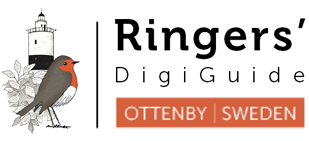

Eurasian Sparrowhawk
AGE – BEST CRITERIA:
NB: The text below is based on autumn birds. At Ottenby, much fewer birds are trapped during spring and, hence, we have many gaps in our photo collection of spring birds. However, since the winter moult in this species is absent (or very restricted), the characters mentioned are valid also in spring. Just add some wear and change the age codes accordingly (1 cy to 2cy, 2cy+ to 3cy+ and so on).
Up to four age categories are discernible, depending on the extent and timing of the post-br moult of the individual. In 1cy, entire plumage juv, fresh and without any moult contrasts. The plumage is brown with rufous fringing on many feather tracts. Older age classes show a grey-blue plumage with no rufous fringing, and most birds show a uniform ad plumage with no moult contrasts (though the regular moult sequence in this species sometimes creates the false impression of contrasts). Other adult birds show true moult contrasts in the wing and can then be categorised as 2cy or 3cy+ based on the retained feathers from the previous generation: If the retained feathers are juv, the bird is in its second plumage (2cy). If the retained feathers are a (worn) ad generation, the bird is in its 3rd or further plumage (3cy+). But it is very important to beware of ’false moult contrasts’ created as a result of multiple moult centres in the SS. Determining whether an ad feather is from an earlier stage of the current moult cycle or from the plumage of the previous year requires a bit of care.
At Ottenby, of the adult (i.e. non-1cy) autumn birds trapped (n=126), 29% showed some retained juv feathers and could be aged to 2cy, whereas 12% showed two ad generations and could be aged as 3cy+. The remaining 59% had a uniform post-br plumage and could only be aged as 2cy+.
Iris colour changes gradually with age and may provide some support to plumage characters, but note a high degree of individual variation.
1cy:
2cy+:
2cy:
3cy+:
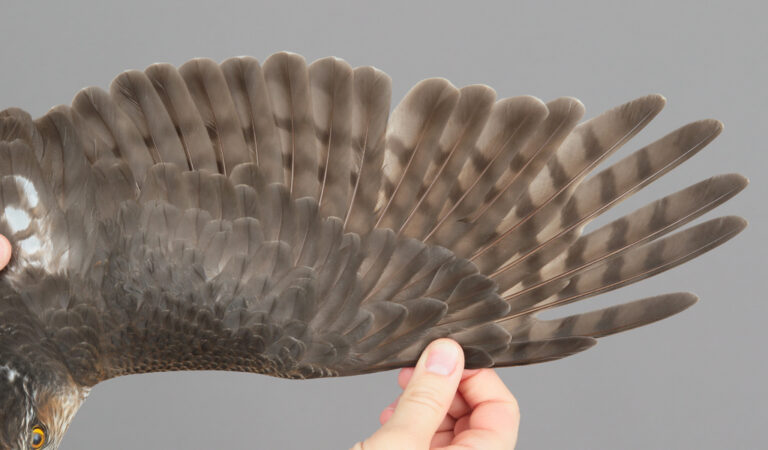
2cy+ female, September. Some ad can show fringing in the wing coverts (note not only the white fringing in the GC and MC of this individual but also the rusty fringing of the smallest LC). [6440203]
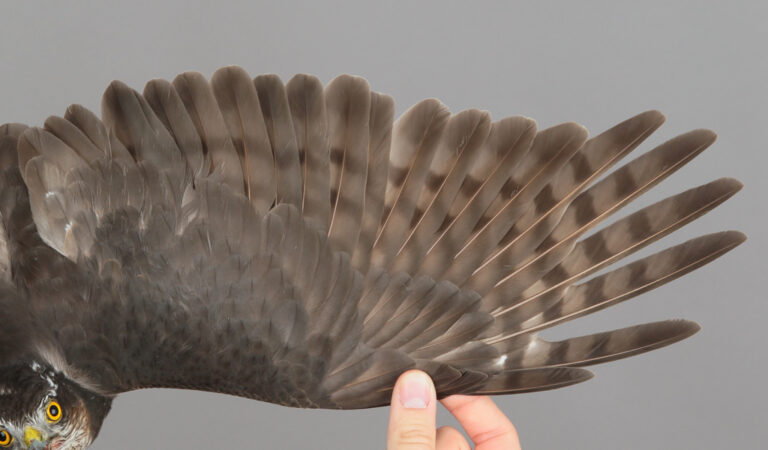
2cy+ female, September. Due to moult timing and sequence, some individuals show considerable differences in wear and bleaching in their plumage, particularly the SS, which may be erroneously interpreted as two different generations. In this individual, for example, S4 looks fresher and bluer than S5. This, however, perfectly matches with the moult order of the SS: S4 is one of the last feathers to be moulted while S5 is one of the first, hence why they look so different (see ageing criteria for more information). [6224992]
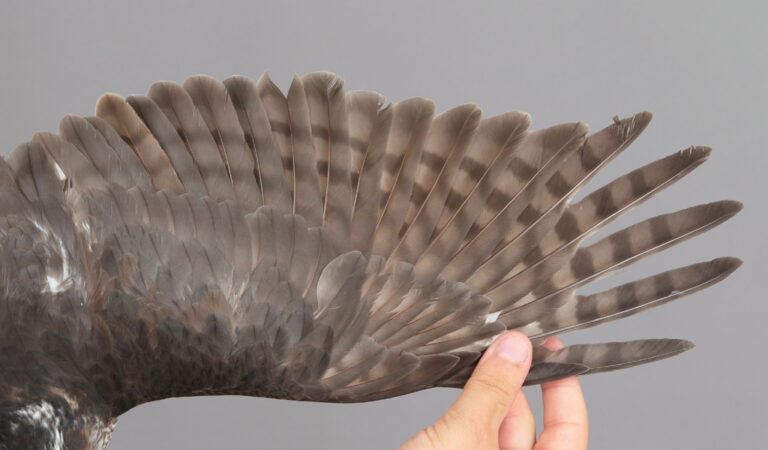
2cy female, September. An example of an individual showing retained juv feathers: S8 (brown in colour, worn edges, different barring pattern) and several LC (brown in colour, very worn, with the buff edges mostly worn away, except for in a couple of protected feathers close to the body). [6224995]
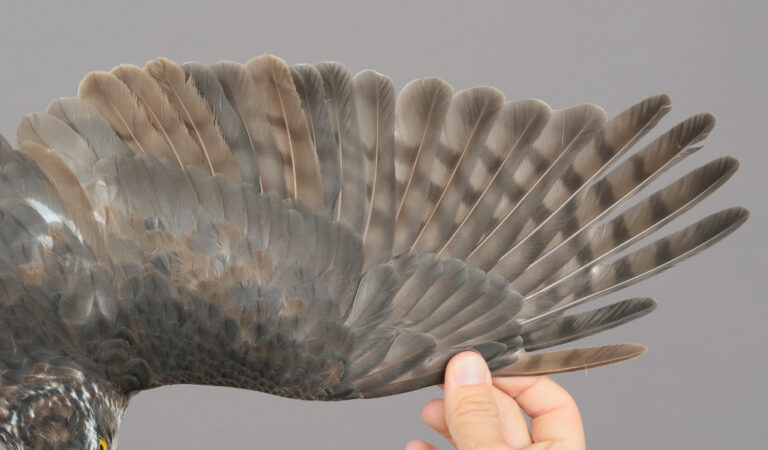
2cy female, September. A bird in active post-br moult showing many still retained juv feathers: 4 SS (showing much a higher level of wear and a difference in length and barring pattern to the ad SS), as well as some MC, many LC, P1, body feathers, etc. Note that due to timing and sequence, the moult has also created striking bleaching differences between the ad SS of the same generation (for example, compare S5 to S6). [6440274]
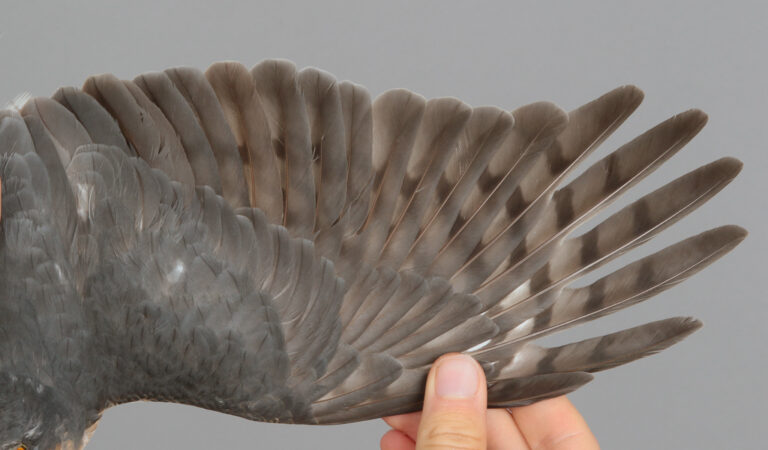
3cy+ male, November. An example of an individual showing retained feathers of a worn ad generation from the previous plumage cycle: S4 and S7. We can tell that there is a true moult contrast towards S4, and not just a 'false contrast' produced by moult timing, by the fact that S4 is usually one of the last feathers to be moulted and hence should look even fresher than its surrounding SS if it was from this year's moult cycle. Furthermore, it is clearly older than the innermost primary, which is typically the oldest feather in the wing (i.e. the first one to be moulted in the cycle). [5084800]
More Accipiter nisus:
Ringers’ DigiGuide is sponsored by: